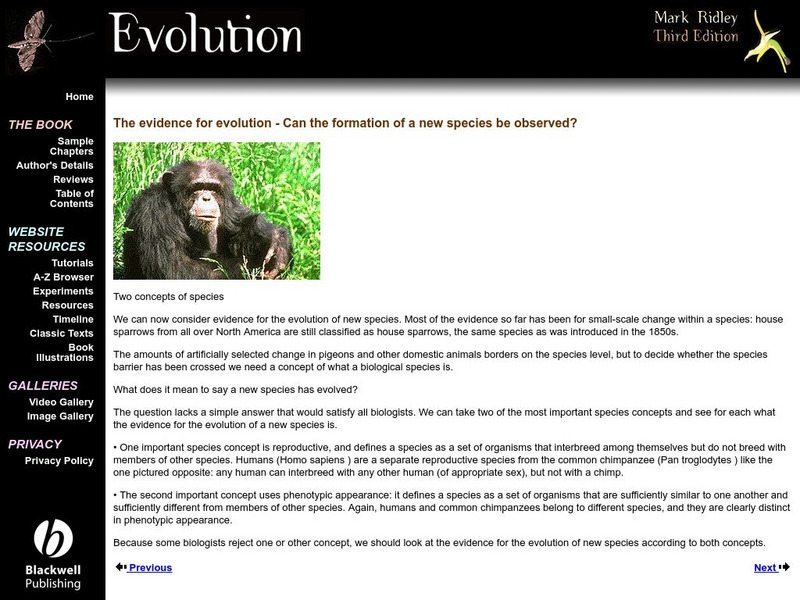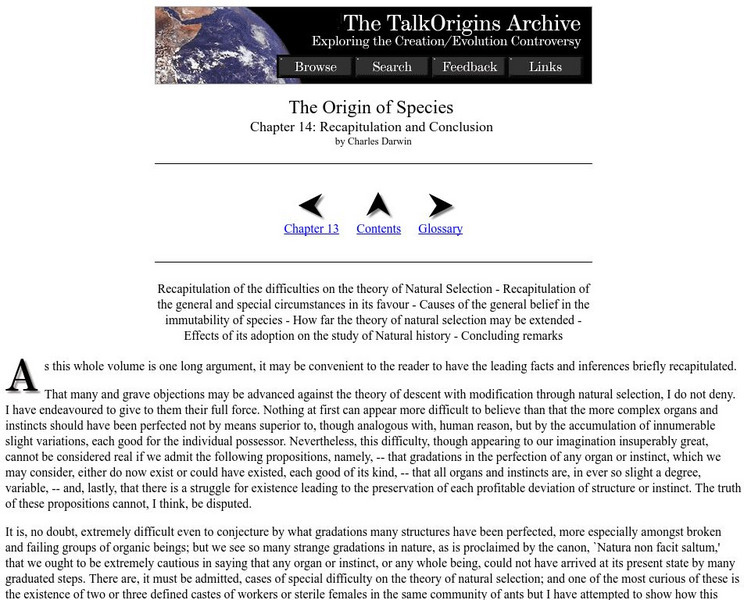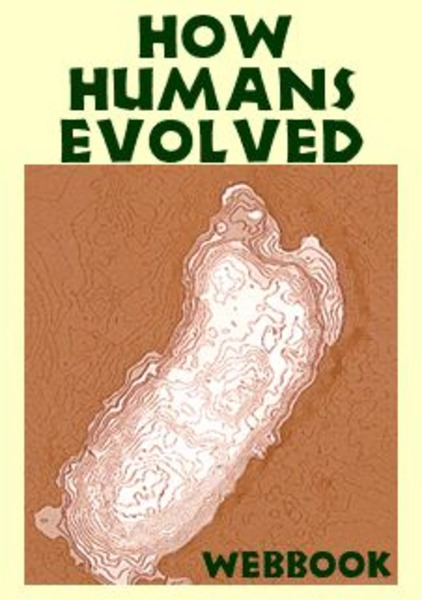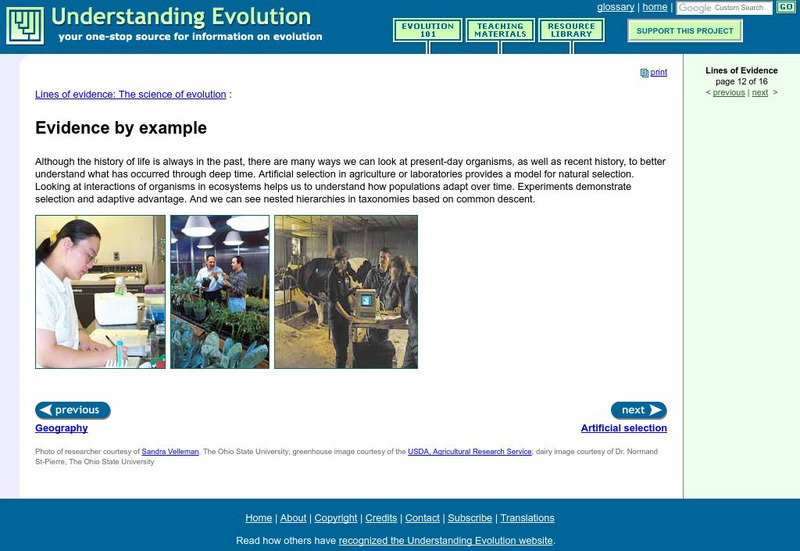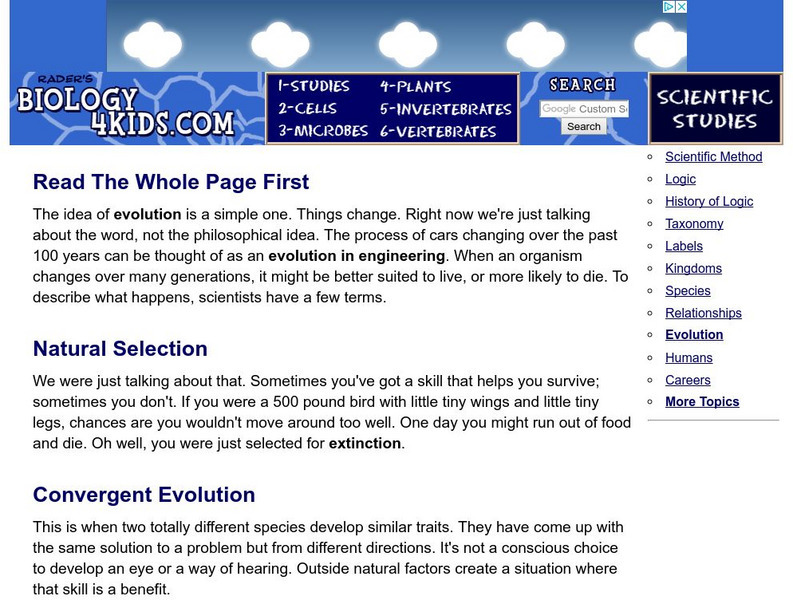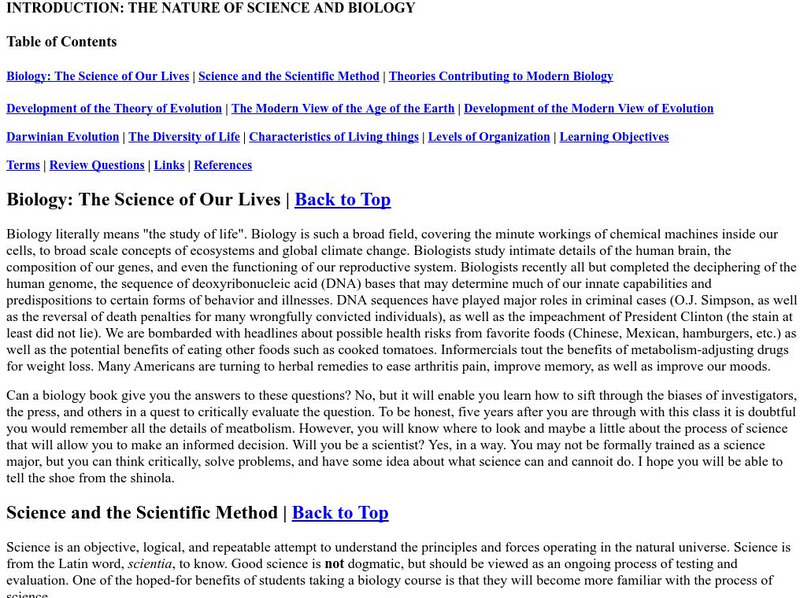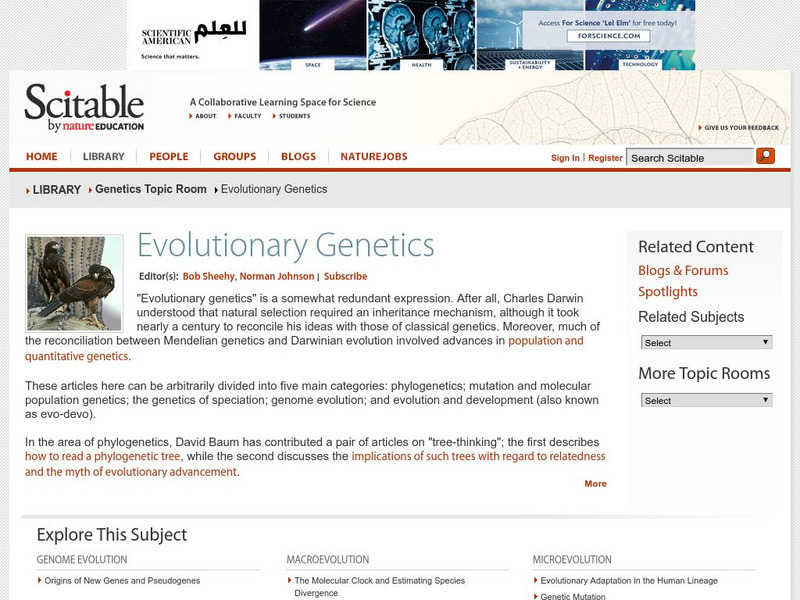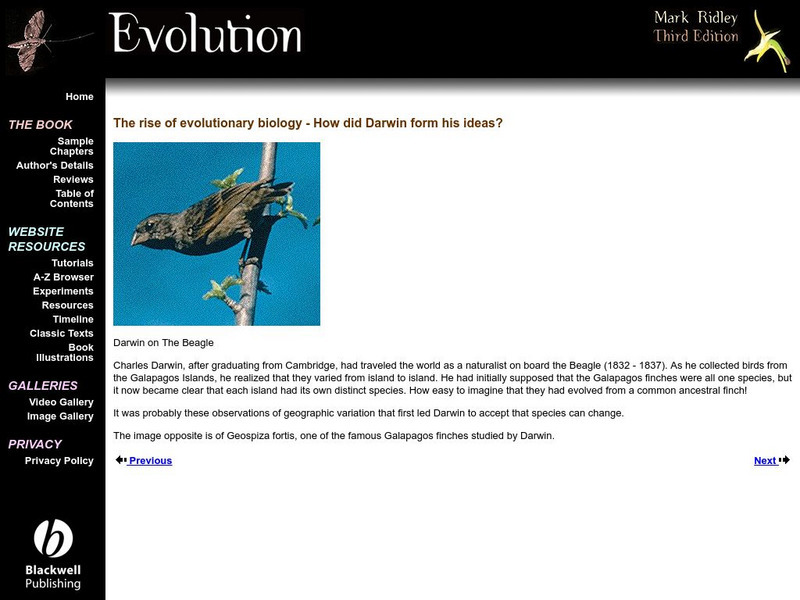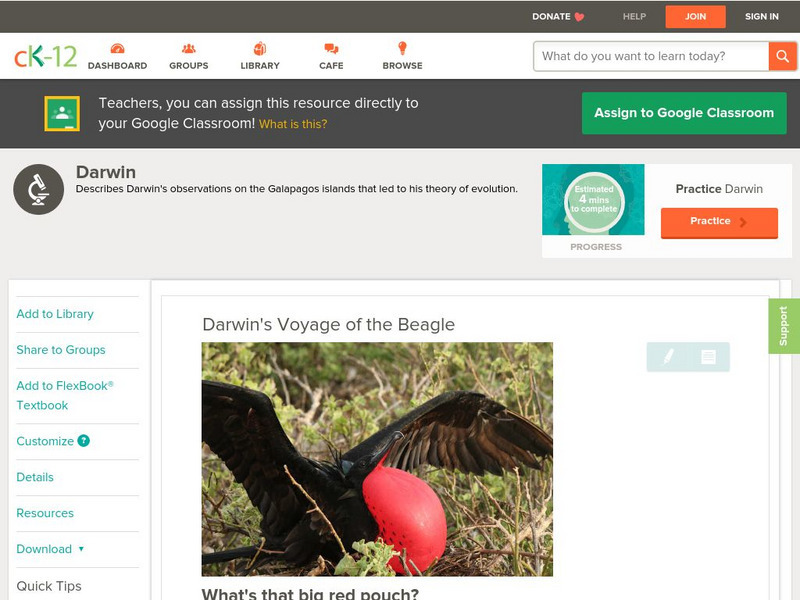Other
Evidence for Evolution: Formation of New Species
These pages are part of a site called Evolution that accompanies a textbook by the same name. Mark Ridley is the author. These pages offer an explanation of speciation using reproductive isolation and differences in phenotype.
Open Curriculum
Open Curriculum: Darwin and the Theory of Evolution
Students will be able to identify important ideas Darwin developed during the voyage of the Beagle, and give examples of his observations that supported those ideas.
What2Learn
What2 Learn: People of Evolution
An interactive game where students answer questions pertaining to evolution to win the shootout.
Talk Origins Archive
The Origin of Species, Chapter 14
The entire text of Charles Darwin's book, The Origin of Species is available on this site. This link is specifically for the chapter that discusses embryology as evidence for evolution.
W. W. Norton
W. W. Norton & Company: How Humans Evolved
This provides access to a webbook about How Humans Evolved. The following topics are covered: (1) How Evolution Works, (2) Primate Behavior and Ecology, (3) The History of Human Lineage, and (4) Evolution and Modern Humans. Each chapter...
National Institutes of Health
National Center for Biotechnology Information: Phylogenetics Factsheet
A detailed website that explains the history and process of classifying animals using evolutionary, molecular, and physical characteristics relationships. Website also contains information on evolution and evolutionary processes....
Massachusetts Institute of Technology
Mit: Open Course Ware: Courses: Civil Environmental: Ecology I: The Earth System
College-level online course highlighting the fundamentals of ecology. Course topics include coevolution of the biosphere, geosphere, atmosphere, and hydrosphere; photosynthesis and respiration; and the carbon, nitrogen, and water cycles....
University of California
University of California Museum of Paleontology: Evidence by Example
The Understanding Evolution website for teachers provides common examples of evolution, especially by artificial selection.
Biology 4 kids
Biology4 Kids: Evolution
Read a brief, but clear description of the three evolutionary processes that occur in species over time.
Estrella Mountain Community College
Online Biology Book: The Nature of Science and Biology
Use the scientific reasoning and critical thinking to take an in-depth look at the basics of biology.
Texas A&M University
Peer Curricula: Story Time: Thomas H. Huxley
A biography of the remarkable life of Thomas Huxley, who began his life in abject poverty, but through self-education and dedication, became a star in world science.
Google
Google Maps: Galapagos Islands
Explore isolated volcanic islands. Charles Darwin's observations and collections of the Galapagos wildlife in 1835 contributed to his theory of evolution by natural selection. [7:08]
University of California
University of California Museum of Paleontology: Homologies
These pages are from the Understanding Evolution website for teachers. They focus on homologous structures that organisms with common ancestors share.
Nature Research
Scitable: Evolutionary Genetics
A collection of articles on evolutionary genetics focusing on the topics of phylogenetics, mutation and molecular population genetics, the genetics of speciation, genome evolution, and evolution and development. Learn how to read a...
Read Works
Read Works: Famous Scientists Charles Darwin
[Free Registration/Login Required] This passage discusses Charles Darwin and his theory of natural selection in evolution. This passage is a stand-alone curricular piece that reinforces essential reading skills and strategies and...
W. W. Norton
W.w. Norton & Company: Alfred Russel Wallace's Comments on Darwinism
An excerpt from "Darwinism: an Exposition of the Theory of Natural Selection with some of its Applications", by Alfred Wallace. He was a contemporary of Darwin who is credited as the co-developer of the theory of natural selection.
Famous Scientists
Famous Scientists: Charles Darwin
A short biography of Charles Darwin, and how he discovered evolutionary theory and natural selection.
BioMan Biology
Bio Man Biology: Snurfle Islands
Create a Snurfle and see whether it can survive in different environments. As you play the game, you will learn about natural selection and animal adaptations. At the end of the game, try the multiple-choice quiz to check your...
The Wonder of Science
The Wonder of Science: Ms Ls4 6: Adaptation of Populations Over Time
Middle schoolers use mathematical representations to support explanations of how natural selection may lead to increases and decreases of specific traits in populations over time.
Curated OER
Field Museum: Exhibits: Evolving Planet: The Basics of Evolution
What is evolution? What is natural selection? How has our understanding of evolution changed since Darwin's day? You will find the answers to these questions and more in this basic explanation of the evolutionary process.
PBS
Pbs Online News Hour Extra: 200 Years Later, Darwin's Theories Still Inspire
Explore this concise article detailing Charles Darwin's Theory of Evolution and follow with discussion questions.
Other
The Rise of Evolutionary Biology: Darwin's Ideas
These pages are part of a site called "Evolution," that accompany a textbook by the same name. Mark Ridley is the author. This section is about Darwin, his travels, and his observations that led to "On The Origins Of Species."
Vision Learning
Visionlearning: Biology: Adaptation: The Case of Penguins
Instructional module focusing on why species change over time through behavioral and physical adaptations. Discusses how environmental mechanisms influence adaptive evolution. Site also includes an interactive practice quiz and links...
CK-12 Foundation
Ck 12: Biology: Darwin's Voyage of the Beagle
[Free Registration/Login may be required to access all resource tools.] Describes Darwin's observations on the Galapagos Islands that led to his theory of evolution.


